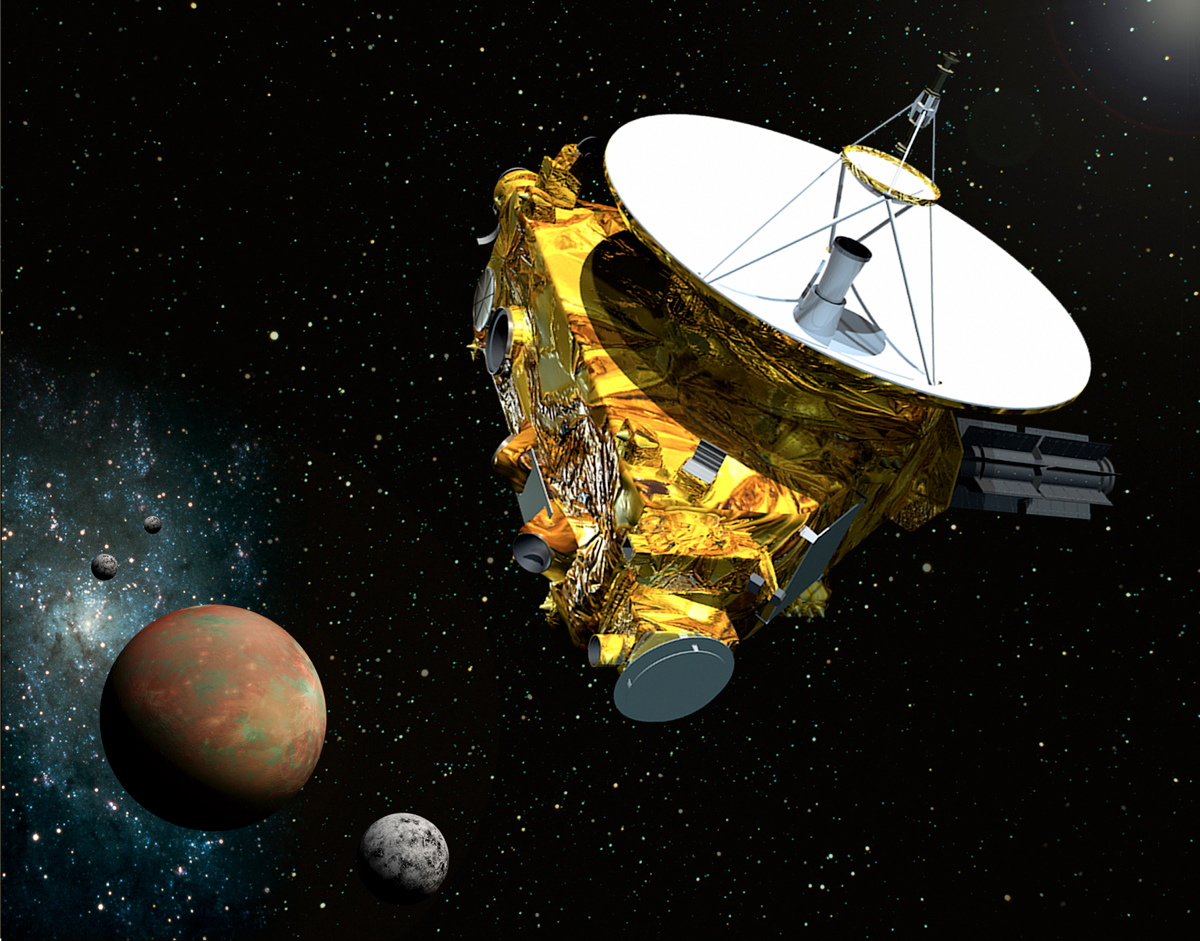Bulletproof Vest Shields NASA's Pluto-Bound Spacecraft (Exclusive Video)

Traveling through space at 34,000 mph (54,720 km/h) poses some risks, which is why NASA's Pluto-bound New Horizons probe is wearing a bulletproof vest.
New Horizons is the fastest spacecraft ever launched. The probe has traveled more than 3 billion miles (4.8 billion kilometers) since blasting off in January 2006, and it's currently covering the distance from New York City to Los Angeles every 4 minutes or so. Traveling at this breakneck speed, even a minor collision could be game over for the entire mission. So the onboard computers and other systems are wrapped in a layer of Kevlar that should protect them from an encounter with a stray rock or a bit of debris.
In this exclusive Space.com video, New Horizons Principal Investigator Alan Stern talks about the dangers facing New Horizons as it nears Pluto, and the steps the mission can take to avoid catastrophe.
It is unlikely that New Horizons will have an encounter with a bit of debris as it approaches Pluto, according to Stern. But, he added, "We are flying into the unknown."
Debris, such as small rocks, could come from Pluto's five known moons, which are occasionally impacted by meteors. When this happens, material from the meteors gets thrown up into the air, and the moons don't have enough gravity to pull the debris back down. Stern said the stuff eventually resettles on Pluto or a larger body, but a stray bit may be lurking in New Horizons' path.
Members of the New Horizons team are on the lookout for debris, and can choose to redirect the probe if necessary. If a major piece of debris were on a collision course with New Horizons, the team could also use the probe's dish antennae as a shield (although these antennas are not covered in Kevlar). Doing so would significantly reduce the spacecraft's ability to collect and transmit data, however, so this strategy would be used only as a last resort.
New Horizons will make its closest approach to Pluto on July 14, in the process becoming the first space probe ever to explore the dwarf planet up close. It will also collect data on Pluto's moons and look for additional moons that haven't yet been identified.
Get the Space.com Newsletter
Breaking space news, the latest updates on rocket launches, skywatching events and more!
Follow Calla Cofield @callacofield. Follow us @Spacedotcom, Facebook and Google+. Original article on Space.com.
Join our Space Forums to keep talking space on the latest missions, night sky and more! And if you have a news tip, correction or comment, let us know at: community@space.com.

Calla Cofield joined Space.com's crew in October 2014. She enjoys writing about black holes, exploding stars, ripples in space-time, science in comic books, and all the mysteries of the cosmos. Prior to joining Space.com Calla worked as a freelance writer, with her work appearing in APS News, Symmetry magazine, Scientific American, Nature News, Physics World, and others. From 2010 to 2014 she was a producer for The Physics Central Podcast. Previously, Calla worked at the American Museum of Natural History in New York City (hands down the best office building ever) and SLAC National Accelerator Laboratory in California. Calla studied physics at the University of Massachusetts, Amherst and is originally from Sandy, Utah. In 2018, Calla left Space.com to join NASA's Jet Propulsion Laboratory media team where she oversees astronomy, physics, exoplanets and the Cold Atom Lab mission. She has been underground at three of the largest particle accelerators in the world and would really like to know what the heck dark matter is. Contact Calla via: E-Mail – Twitter









